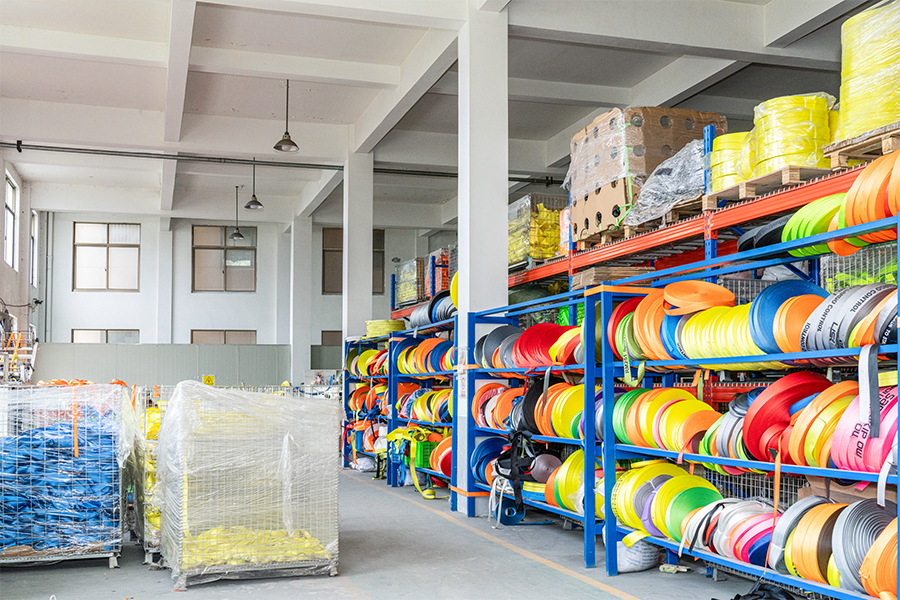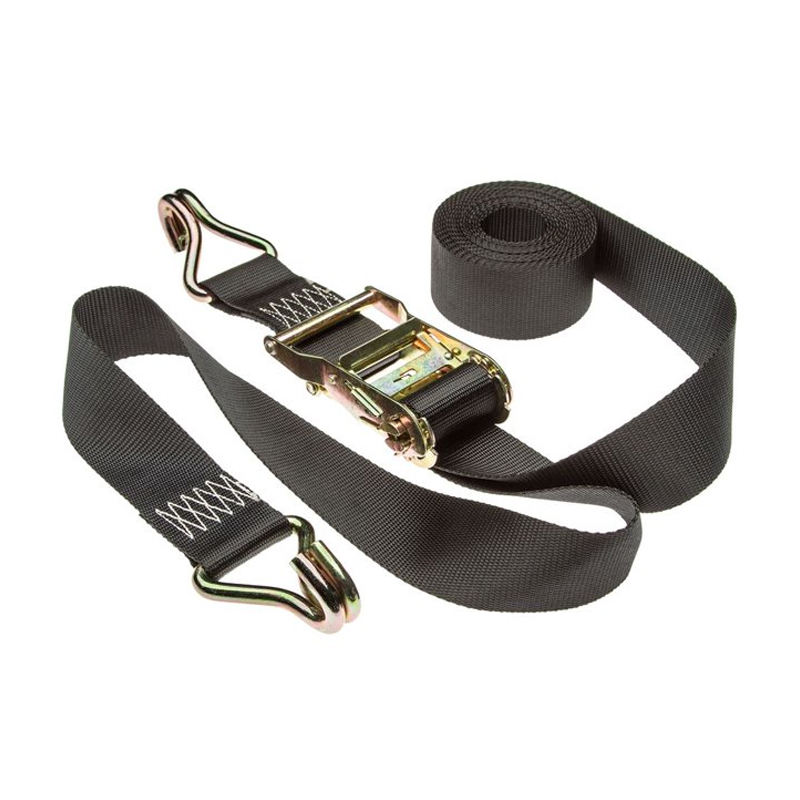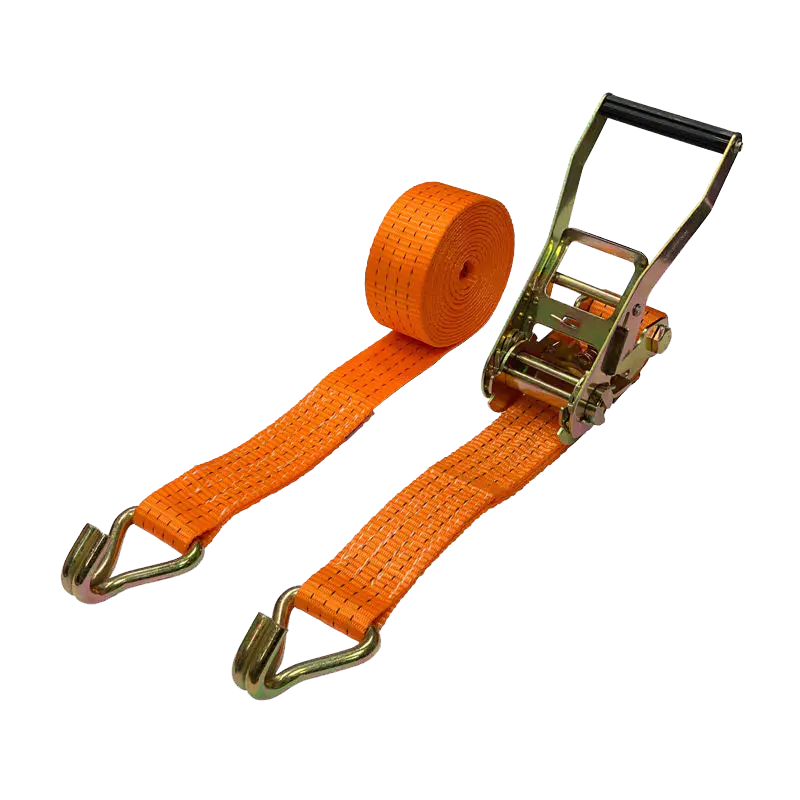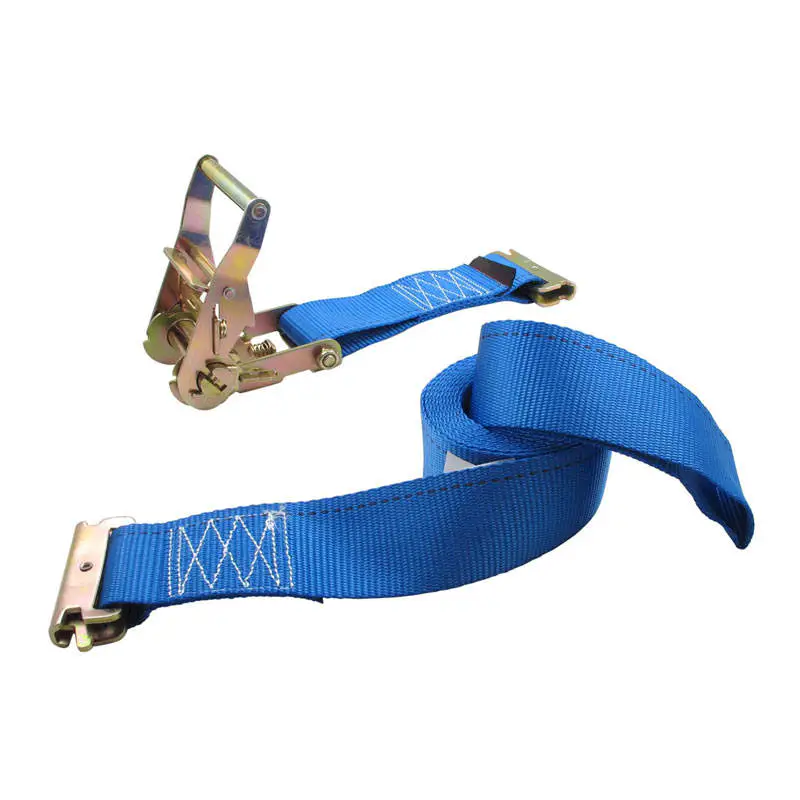In the fields of logistics and transportation, construction sites, outdoor sports, etc., strapping (also known as strapping, fastening strap) is an essential tool for fixing goods. The cam buckle strap has become the first choice for fasteners in many industries due to its easy operation, strong fastening force, and reusability.
A cam buckle strap is a strapping strap that uses a cam locking mechanism, mainly composed of high-strength webbing, cam buckles, and metal or plastic fasteners. It is firmly fixed by manually tightening the webbing and using the self-locking principle of the cam. It is suitable for truck transportation, construction material fixing, outdoor equipment bundling and other scenarios.
Main components
High-strength webbing: usually made of polyester fiber or nylon, with tensile, wear-resistant, corrosion-resistant and other characteristics.
Cam buckle: core locking component, using the lever principle and friction self-locking to fix the webbing.
Metal/plastic end buckle: used to fix the end of the webbing to prevent slipping.
2. Working principle of cam buckle strapping
The tightening and locking of cam buckle strapping depends on the mechanical principle of cam mechanism. The specific working process is as follows:
The user wraps the strap around the object to be fixed (such as goods, wood, etc.), then passes the strap through the cam buckle and tightens it manually to make the strapping fit the surface of the object.
- Cam self-locking mechanism
When the strapping is tightened, the eccentric cam inside the cam buckle will rotate due to the force and press the strapping.
The shape design of the cam makes it produce a self-locking effect when it is stressed, that is, the strapping becomes tighter and tighter, but the force in the opposite direction (loosening direction) will be stuck by the cam to prevent loosening.
If you need to loosen the strapping, just pull the release lever of the cam buckle to make the cam disengage from the strapping, and you can easily adjust or release the fixation.
3. Advantages of cam buckle straps
Compared with ordinary Velcro straps, ratchet straps or ropes, cam buckle straps have the following advantages:
Simple and fast operation
No tools are required, just tighten manually to complete the fixation, which is more time-saving than ratchet straps.
Suitable for frequent loading and unloading scenarios, such as logistics transportation, temporary cargo fixation, etc.
Strong adjustability
The length of the webbing can be freely adjusted to adapt to cargoes of different sizes.
The tightness can be adjusted at any time to ensure that it is firmly fixed and not loose.
High load-bearing and durability
The tensile strength of high-quality cam buckle straps can reach 500kg~2000kg, which is suitable for heavy cargoes.
Polyester/nylon webbing is wear-resistant and UV-resistant, suitable for long-term outdoor use.
Reusable
Unlike disposable cable ties, cam buckle straps can be used repeatedly to reduce costs.
Maintenance is simple, just check whether the webbing and fasteners are worn.
Wide applicability
Logistics transportation: fix the cargo on the truck to prevent bumps and slippage.
Construction sites: Bundle steel pipes, building materials, scaffolding, etc.
Outdoor sports: Fix tents, kayaks, bicycles and other equipment.
Home use: Organize gardening tools, store items, etc.

4. How to use cam buckle tie-downs correctly?
Check the webbing and fasteners: Make sure there is no wear and tear, and avoid using damaged tie-downs.
Correctly wear the webbing: Pass the webbing through the cam buckle smoothly to avoid twisting that affects the locking effect.
Even force: When bundling, try to make the webbing fit the object evenly to prevent partial over-tightening and breakage.
Regular maintenance: When exposed outdoors for a long time, it is recommended to store it in a dry place after cleaning to extend the service life.
5. FAQ about Cam Buckle Tie Down
How to tell if a tie-down is still safe to use?
Check the following:
Webbing: Cuts, abrasions, fiber breakage or chemical corrosion
Stitching: Cracks or looseness
Metal parts: Rust, deformation or cracks
Cam mechanism: Locks and releases properly
Color: Severe fading due to UV exposure (indicating material aging)
Why does my tie-down loosen on its own?
Possible causes:
Dust/sand in the cam buckle → Clean the cam mechanism
Webbing twisted and not passed smoothly → Rethread correctly
Cam wear leads to insufficient locking force → Replace with a new tie-down
Overloaded → Switch to a higher load-bearing model
Can it be used outdoors for a long time?
Yes, but be aware of the following:
Choose a polyester material with UV protection treatment
Avoid long-term immersion in water (nylon absorbs water and reduces strength)
Check for aging once a month
It is recommended to replace the tie-down for outdoor use every 2-3 years
How to clean and maintain?
Routine cleaning: wipe with a damp cloth, use a neutral detergent for stubborn stains
Drying: dry naturally, avoid exposure to the sun to accelerate aging
Storage:
Store rolled up to avoid permanent creases caused by folding
Keep away from chemicals, high temperature sources and sharp objects
Ideal storage temperature: -20℃~50℃














